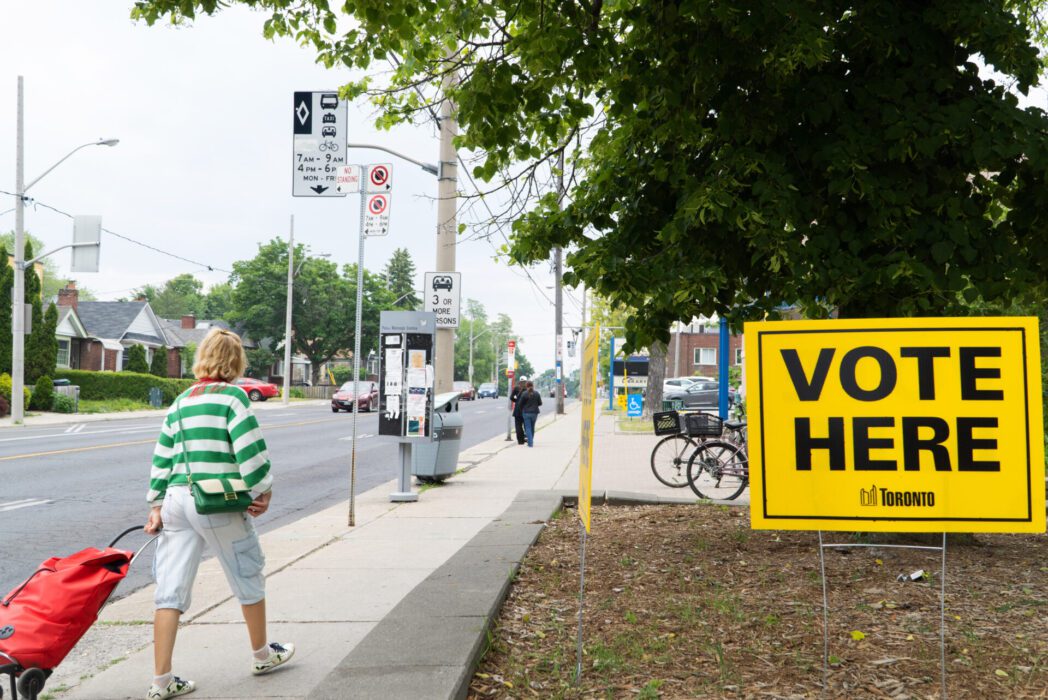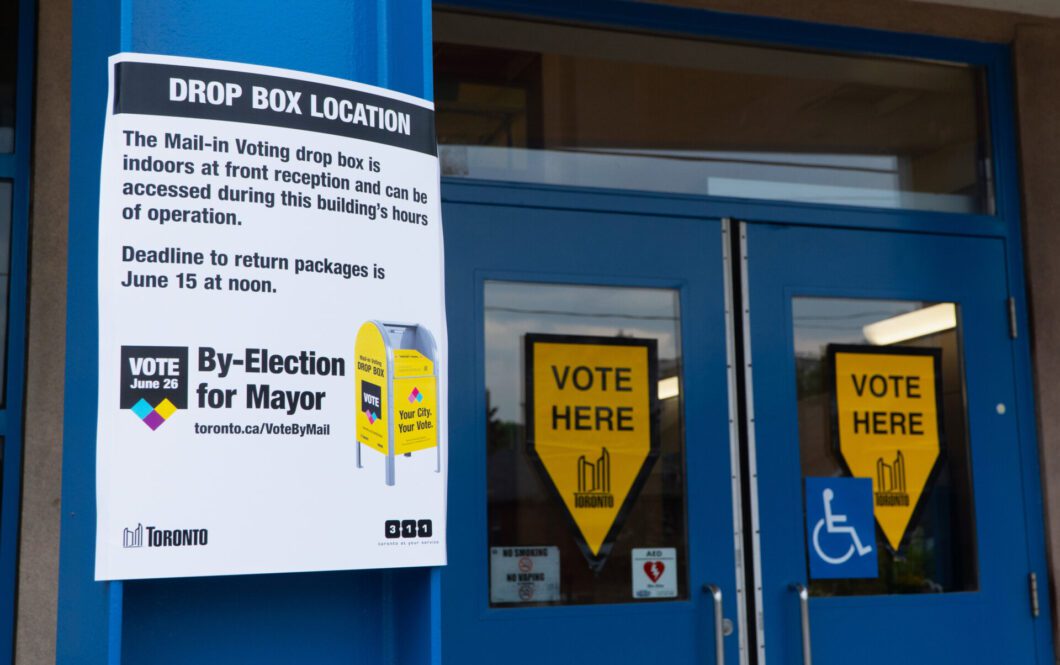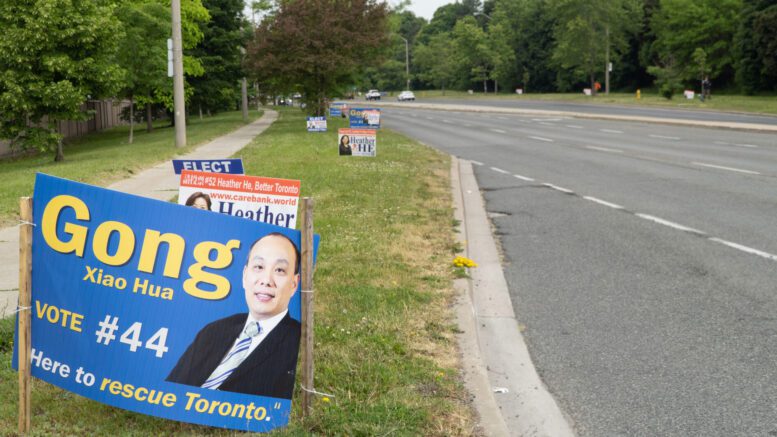With over 100 candidates running in the 2023 byelection for mayor, Torontonians are experiencing political frustration around present city council construction, some experts say.
From high-profile candidates like Olivia Chow and Josh Matlow, to lesser-known contenders such as Glen Benway and Roland Chan, a record-breaking list of 102 people are in the June 26 race for mayor.
The previous record was set in 2014, with a total of 65 candidates. At that time, incumbent Mayor Rob Ford dropped out of the race due to health issues, and the seat was won by John Tory, who resigned early this year after admitting to having an affair with a staffer during the pandemic.
Dennis Pilon, an associate professor from the department of politics at York University, said that the interest of people running for mayor speaks to “a sense of political frustration with the present council construction,” due to the application of strong mayor powers and the 2018 reduction of the size of the city council.
“A lot of people are frustrated by, on the one hand, kind of a claiming that we’re a democracy, that they should have influence, and then the repeated efforts of the provincial government to limit how people can try to represent themselves and hold city council accountable,” said Pilon.
“The fact that there is a hundred people coming forward is not an indication of success, but an indication of failure, that people are saying something’s wrong with the local government.”
Why are there so many candidates?
Matt Elliott, a contributing columnist for the Toronto Star and creator of the City Hall Watcher newsletter, said that the polls he has seen recently show that “a very clear majority of people agreed that the city is going in the wrong direction.”
“I think, when running for the mayor of Toronto to running for other positions, that the bar is actually quite low to getting your name on the ballot,” Elliott said.
The requirements to run for mayor of Canada’s largest city are basic. Candidates need to be Canadian citizens and Toronto residents, and at least 18 years of age. They are required to submit a nomination paper that includes basic background information and declaration, 25 signed endorsements with original signatures, and a $200 filing fee.
Apart from the simple registration requirements, the long list of candidates appeared in this byelection because it is different from usual municipal elections.
Pilon said without an incumbent in the byelection, candidates might feel they have a better chance at winning, because in the previous municipal elections there was a “perception that the incumbent was unbeatable.”
Elliott said that the mayoral byelection is also different because city councillors elected last fall can run for mayor without resigning from their seat.
“If things don’t go their way on June 26, they wake up on June 27 and they still have a job at city hall as a city councillor,” he said.
Read more from the Toronto Observer:
- Therapy centre looking for more support from new mayor
- Election edges city council closer to diverse representation
- Canadian youth aren’t doomed, say panellists who urge voter action, not apathy
Elliott explained candidates like Coun. Anthony Perruzza may think their chances of being elected are low, but believe running a campaign will still be beneficial for the next municipal election.
“If you really want to be the mayor of Toronto, and you think that you can win, should you not be confident enough that you are willing to resign your council seat and focus full-time on the mayoral campaign?” Elliott said.
Elliott has heard some constituents say they are concerned about the workload of candidates who are current councillors, wondering how they can run a mayoral campaign while managing their corresponding wards.
Impact on voter turnout

Last fall’s municipal election recorded the lowest voter turnout on record, with only 29 per cent of voters taking the time to cast a ballot. Voter turnout for the mayoral byelection could be equally dismal.
“It’s a problem when there is over a hundred candidates; that does contribute to voter confusion. It makes it harder for voters to figure out, who are all these people?” Pilon said.
The difficulty for constituents to identify the front runners rises as the numbers go up. When there are many candidates with similar political affiliations or stances on certain important issues, the vote may be split among them. Pinpointing a candidate with a higher chance to win becomes a challenge to voters.
Pilon said when people have a clear understanding of the list of front runners, it may help with voter turnout.
According to City of Toronto, from June 8 to June 13, 129,745 eligible voters casted their ballots in the advance voting, which is a 11.9 per cent increase from the advance voting of the 2022 general municipal election.
Michael Urban, the co-chair of the advocacy group Ranked Ballot Initiative of Toronto (RaBIT), said vote splitting may not only suppress voter turnout but could also lead to an unrepresentative election result.
The problem with the current electoral system
Toronto currently adopts a first-past-the-post electoral system, which means the candidate with the highest number of votes wins the seat, without an absolute majority of over 50 per cent of the votes.
When votes are split between two frontrunners, it may result in the win of a third contender. “I don’t think we want a voting system that the results are accidents,” Urban said. What RaBIT is advocating for is to introduce ranked ballots in Toronto’s municipal election.
The ranked ballot system allows voters to select multiple candidates and rank them in order based on their preference. If one candidate gains 50 per cent of the first-choice votes, they will be declared the winner.
RaBIT found that this system gets higher voter turnout and greater representation from marginalized and young communities. Urban said candidates from marginalized backgrounds had greater frequency in winning than under the current system. For example, the most diverse council was formed when New York first adopted ranked ballot municipal election in 2021.
The illusion of Toronto’s system

“The openness of Toronto’s system is an illusion,” Pilon said. “The candidates who’ve got resources, who’ve got volunteers, who’ve got some political capital, they’re going to be talked about and the rest are going to be ignored.”
Although the chance of amateur candidates winning this byelection is relatively low, Elliott thinks they may still want to raise public awareness on certain issues by running for mayor.
“In a properly free and democratic system, those things wouldn’t matter. It wouldn’t matter if you didn’t have money. If your ideas were good, people wanted to respond to what you had to say, you would get a chance to be heard,” Pilon said. “We have a system that privileges those who have access to resources.”


